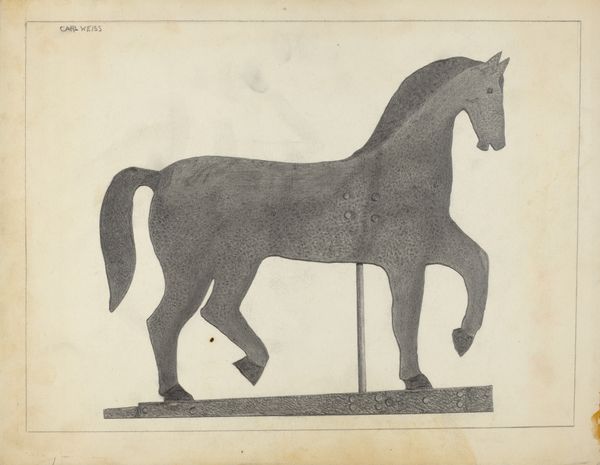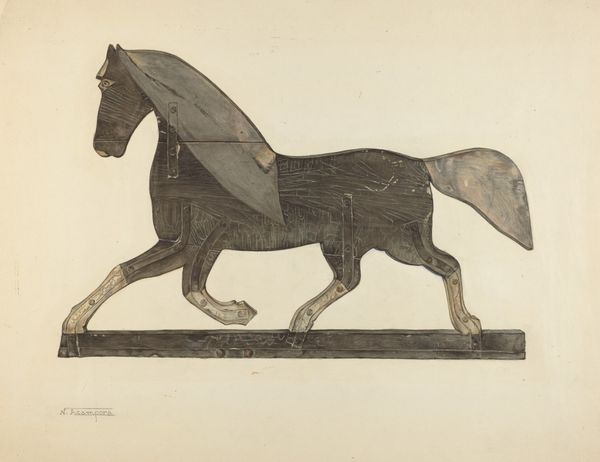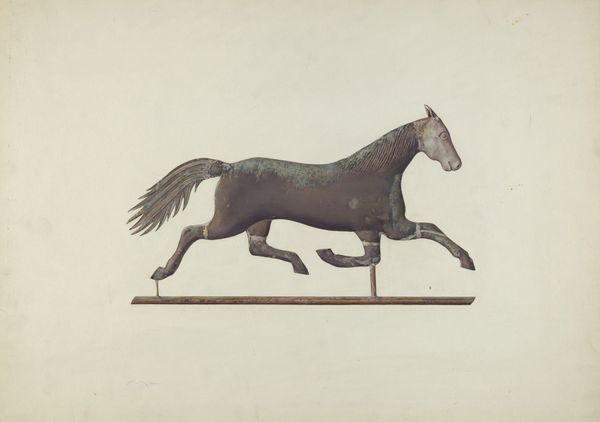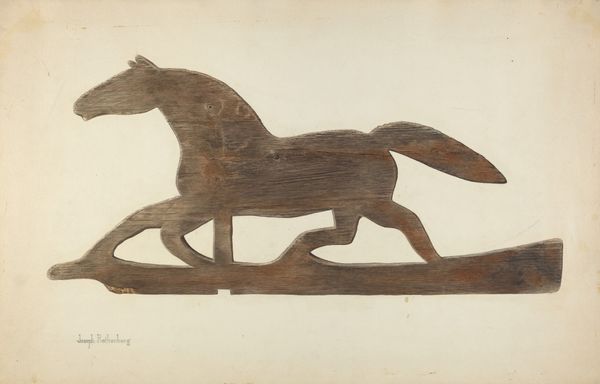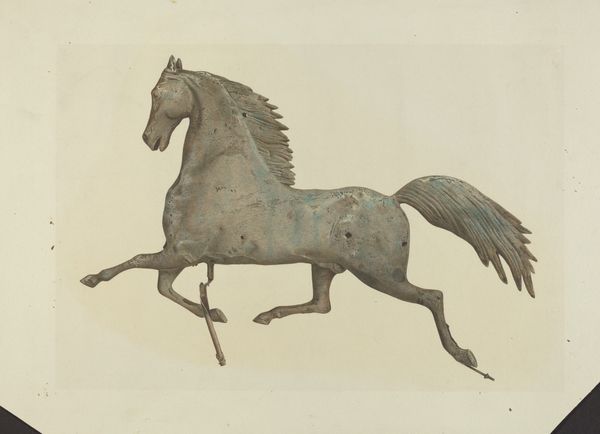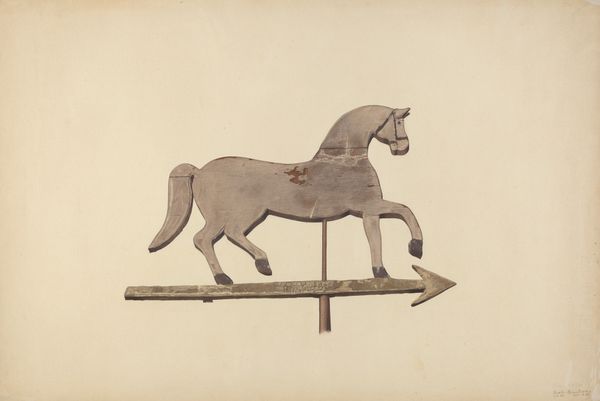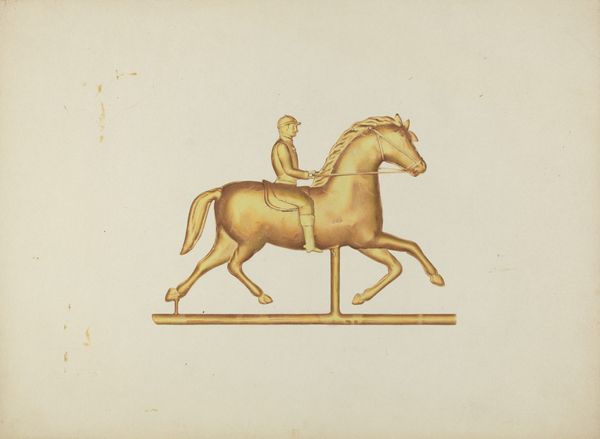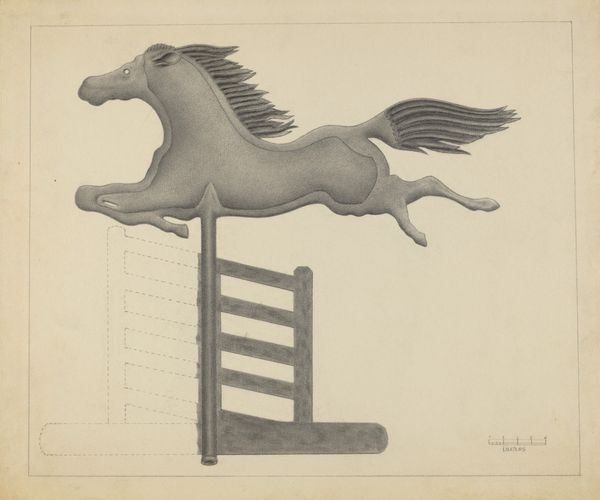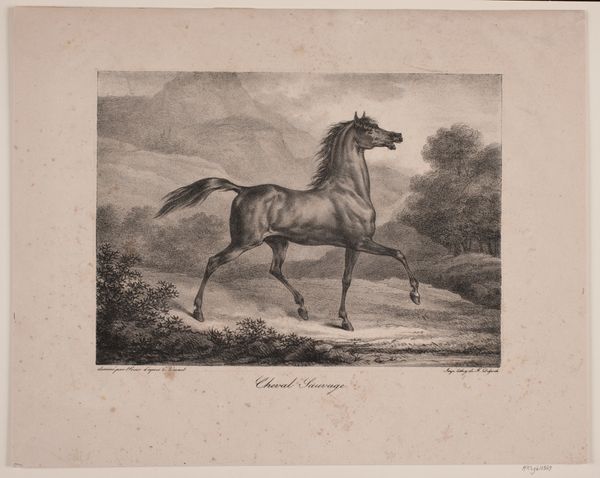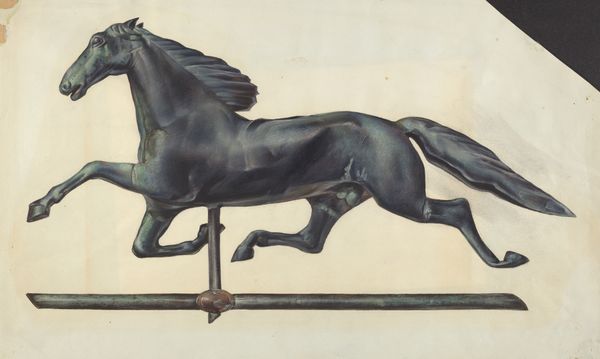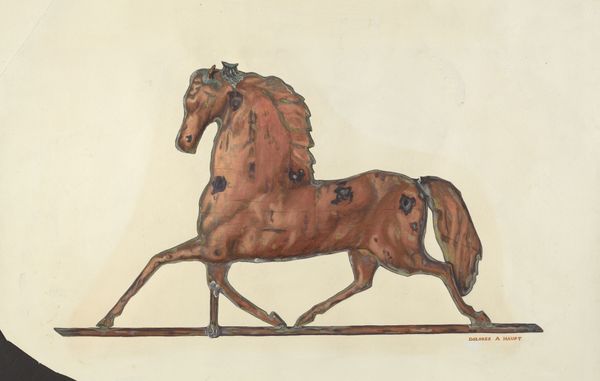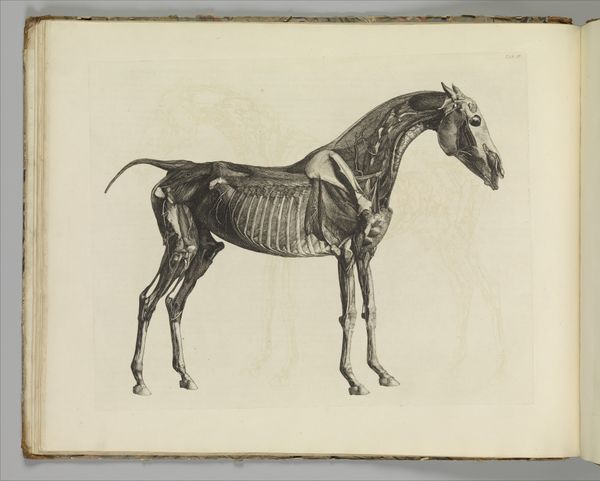
drawing, pencil
#
drawing
#
landscape
#
figuration
#
geometric
#
pencil
Dimensions: overall: 22.6 x 29 cm (8 7/8 x 11 7/16 in.) Original IAD Object: 46" long; 20" high
Copyright: National Gallery of Art: CC0 1.0
Curator: This drawing, simply titled "Weather Vane," was created around 1937 by Joseph Stonefield. It's a pencil rendering, offering a study of form and function. What leaps out at you? Editor: Initially, I see an incredible stillness captured in motion. It's like time has been momentarily suspended in this sketch of a horse galloping forever in place. Curator: Indeed, Stonefield masterfully captured the essence of movement in a static form. What draws my eye is how a simple object becomes a symbol. Throughout history, weather vanes transcend their functionality, carrying societal narratives of agriculture, direction, and maybe a sense of navigating destiny itself. The choice of a horse surely plays into this. Editor: I couldn’t agree more! A horse, culturally speaking, embodies energy, freedom, power, and even nobility. But here, constrained by its very design, perhaps hints at limitations or directed force, or even being at the mercy of exterior factors—the wind, as a metaphor for external pressure or events. Curator: Interesting! So, you’re thinking the weather vane as a symbol suggests our fate being directed by outside forces. I also see something inherently American in the subject, reflecting perhaps an enduring vision of westward expansion and self-reliance, tempered by a pragmatic understanding of needing to adapt to changing circumstances. Editor: That resonates strongly. And in viewing it rendered as a drawing rather than a fabricated object adds another layer. It moves it into the realm of a vision, or concept, versus a utilitarian device. I appreciate its formal rendering, how it has the coolness of a technical drawing. There's a sense of distance. Curator: True. And within that distance lies the invitation for us, the viewers, to breathe life into the lines. Ultimately it is not just a drawing of an object, it’s a reflection on guidance, control, and our relationship to the forces that shape our lives. Editor: I find myself contemplating how an object designed to be so practical can evoke such layered interpretations. Curator: A true testament to the enduring power of art, wouldn't you say?
Comments
No comments
Be the first to comment and join the conversation on the ultimate creative platform.
